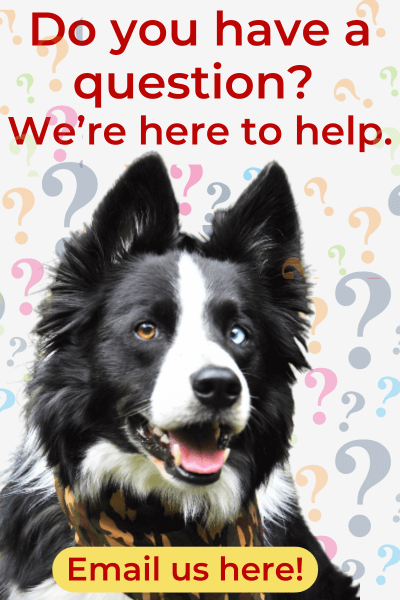Tips for keeping your older Dudiedog Mobile and Comfortable
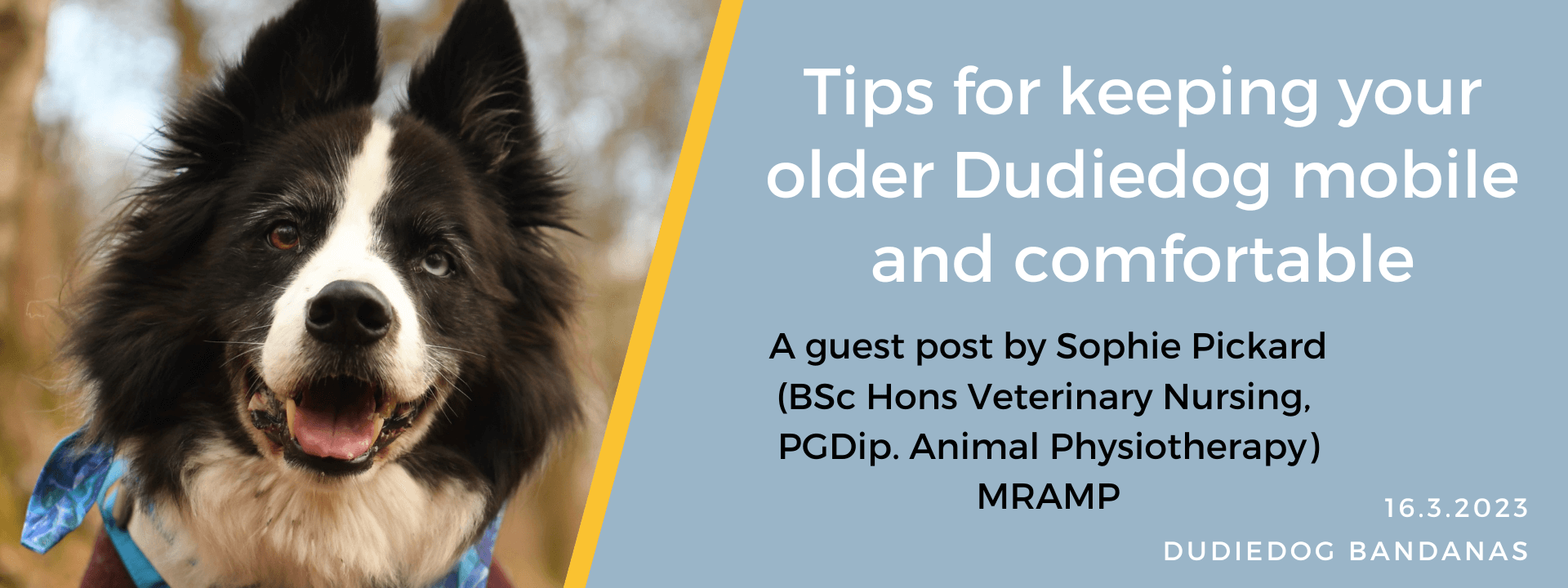
Sophie Pickard (BSc Hons Veterinary Nursing, PGDip. Animal Physiotherapy) MRAMP
To launch the new Dudiedog blog we're delighted to introduce our special guest writer, Sophie Pickard (BSc Hons Veterinary Nursing, PGDip. AnimalPhysiotherapy) MRAMP
Sophie has been Skye Blue's Physiotherapist for the past 3 months, and the results have been significant, in terms of stability, mobility & general mood. We asked Sophie if she would share some advice for looking after our seniors, and we're extremely grateful that she agreed. We hope you find her tips useful.
Introduction:
As our dogs age it is inevitable that the wear and tear of a life well lived can start to take effect, and begin to limit or alter our faithful friends mobility.
Being their guardians, we are tasked with doing what we can to support them through their golden years to help keep them as comfortable and mobile as possible, and give them the best quality of life that we can....I'm here today to give you a few helpful tips on how to keep your older pet happy and comfortable.
1. Warm up
This is a simple one, but one that is easily overlooked. It is important to include a warm up and cool down in every exercise session. It's too easy to pull up at a beauty spot, open your car boot, and away your hound goes, bounding along, chasing balls, or racing to make friends....This can unfortunately contribute to the risk of injury, and cause your pooch to become stiff and sore following exercise. You don't have to do much to improve things a lot. Just 5 minutes of calm on lead walking before beginning any fast 'burst' activities can really help. Even better if you include some stops, stand stills, sits, and small figure of 8s within that lead walking time. Then you can set your canine free to do all of their doggy missions that they're desperate to be getting on with.
2. Weekend Warriers
This is a common phenomenon in the physio world. Many of our dogs fit around our hectic lifestyles during the week, with all of their needs attended to, but maybe just a few shorter walks, as and when their owner has time. Come the weekend and we make it up to our dogs by taking them out for a big hike, longer day walks, adventures out around town, or runs out with friends, which we all very much look forward to, but unfortunately this irregular spread of exercise can cause some issues, especially with older dogs. Dogs, like us, are subject to the condition of Delayed Onset Muscle Soreness (DOMS), and can easily become fatigued.
Overdoing things on weekend walks can cause microtears in their muscles, which then heal, but form less pliable scar tissue, which then causes a limit to their muscles contractility, causing them to become weaker and more painful and more likely to create injury by fully tearing. Weaker, less healthy muscles can also contribute to overloading of joints, and therefore predispose the dog to the painful joint condition, Osteoarthritis. I find that my older patients do a lot better with shorter, more frequent walks every single day, such as 3-4 x 15-30 minute walks each day, rather than a couple of hours every now and again.
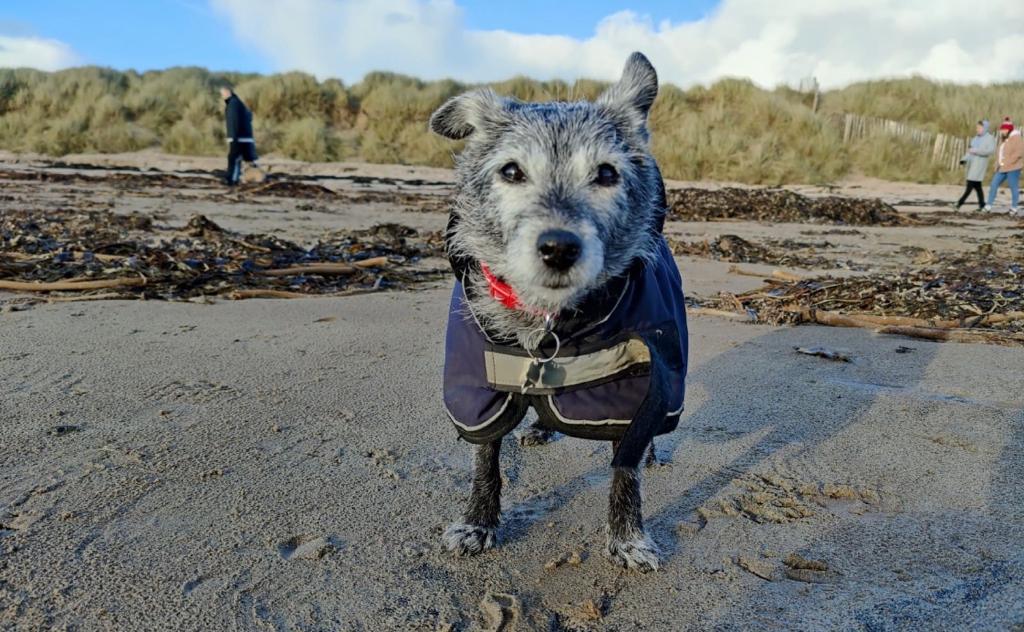
Using appropriate clothing can help keep your pooch warm and able to keep enjoying all their favourite outings and activities.
3. Fun Police
Keeping to the subject of exercise, it is important to consider the type of exercise and not just the frequency and consistency of exercise. There are a few activities which can cause a lot more strain and wear and tear on joints and other structures in the body, such as ball chasing, jumping up, fast stops and turns, and running on hard ground. These activities are obviously a lot of fun for our pups, but sadly do the most damage, and so it's wise to adapt them to suit our elderly pals, eg. Instead of throwing the ball, why not hide it somewhere for your sniffer to hunt for it? Or taking a ball for a walk with you, and intermittently letting them carry it. Sometimes it's just obtaining the ball that can give them a kick! If your pup is still desperate to retrieve the ball, and is still comfortable to do so, then try rolling it instead of throwing it, so they can follow it without the risk of them stopping, twisting or falling to reach it.
4. Weight
When our four legged friends are less able to enjoy the activities they always used to, it becomes tempting to reward them in other ways, often with treats and titbits. Sadly this can contribute to excess weight gain in the later years as metabolisms slow and general energy expenditure is reduced as well. Weight gain can increase the loading of joints, and fat cells themselves can initiate inflammatory responses and contribute to joint pain and arthritis, so it’s a good idea to limit treats, measure food intake, and keep our four legged pals lean.
5. Getting Comfy
Something else to think about is where your pooch sleeps. Is their bed well cushioned? Does it keep their joints protected from hard surfaces? Providing a supportive and comfortable bed, with an easy access so that when they get up from sleep they don't struggle to get to their feet. Having a bed big enough, or even better, a choice of beds, for them to alter positions (snuggle up or stretch out). There are so many comfortable and beautiful beds on the market these days, it’s hard to only buy one....so buy more and give your dog a choice! Place a rug or mat at the access point so that they don’t slip on tiled or laminate floors when getting in and out.
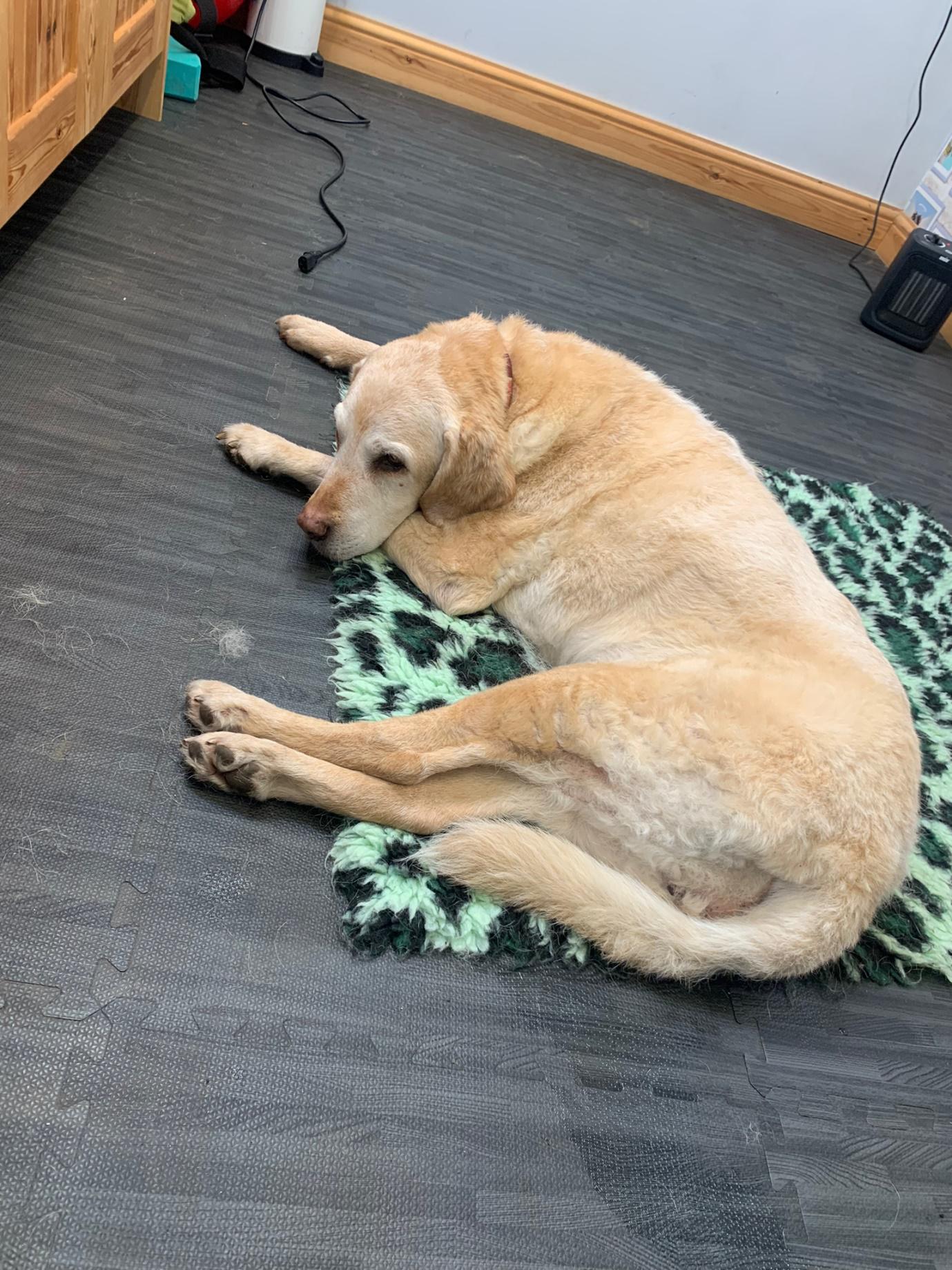
Consider where your dog chooses to sleep and ensure they have a non slip surface when rising from their bed.
6. Touch
OK, this might sound silly...of course you touch your dog. There’s nothing we love more than giving them a good pat and a cuddle, but touch can also be very therapeutic (for both canine and owner). Touch can help override any pain signals which your older pal may be receiving from stiff joints or sore muscles. Give them a good firm stroke each day to increase circulation and stimulate their touch receptors and override those nociceptors! If you notice that they have an area they particularly like being touched in, or one they especially don’t, it may be worth recording these and monitoring their responses. Mention this to their vets at their next visit, as it may give us a clue to where there might be pain or discomfort.
7. And Finally...
It was pretty obvious that, in my opinion, this one is something that can really help your older dog....Physio! If you have a Veterinary Physiotherapist near you, see if you can make your canine friend an appointment with them. They’ll be able to check your dog’s body for muscle restrictions and adhesions, and can use a number of therapies to help them, such as LASER therapy, therapeutic ultrasound, Pulsed Electromagnetic Field (PEMF) therapy, TENS, NMES, massage, mobilisations, myofascial release....PHEW! There are so many ways we can help, even if it’s just a little bit every now and again. Your dog will learn to love it, and it just may help them to keep enjoying all the things in life that they love!

Physiotherapy and LASER therapy can really benefit your dog by helping to keep their joints comfortable.
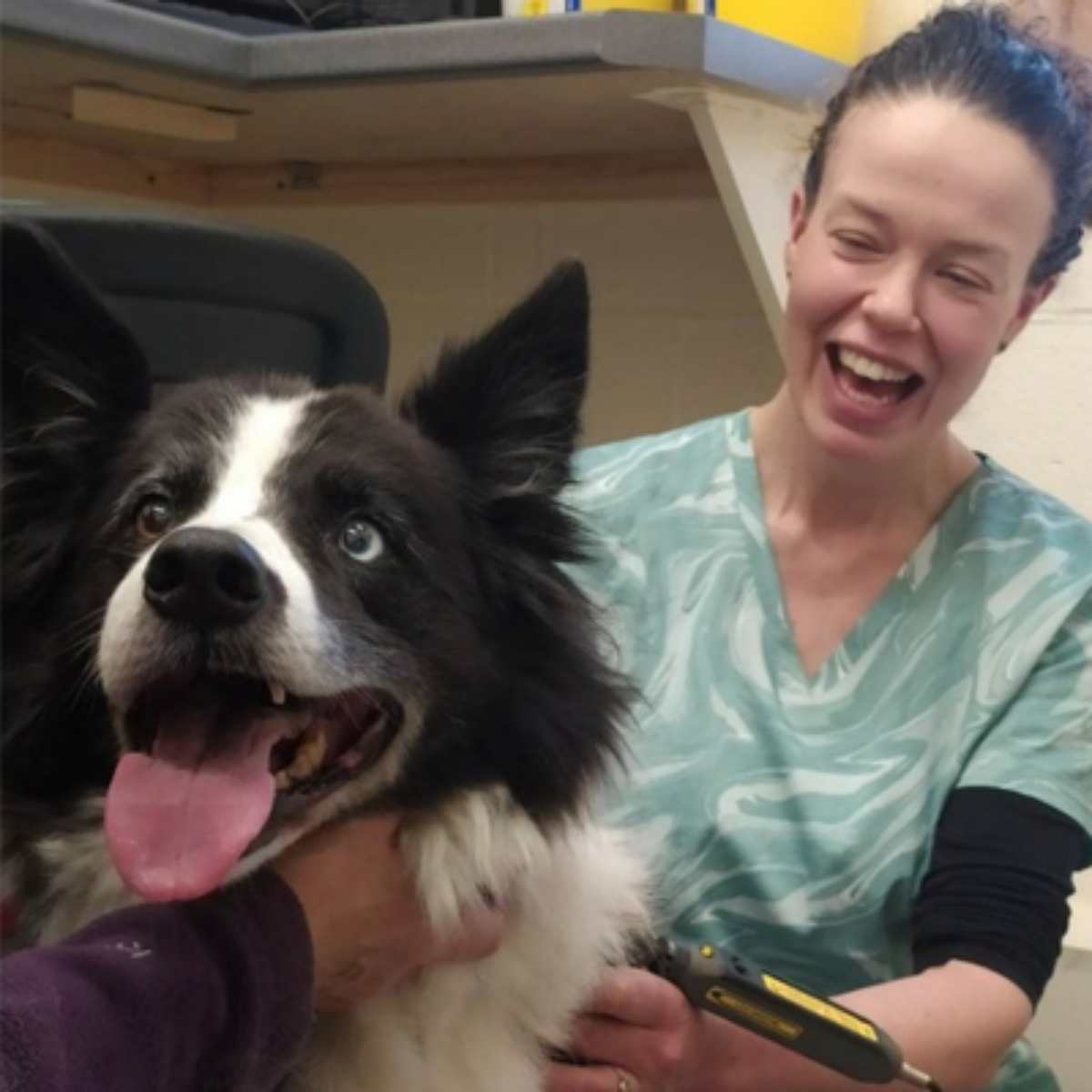
Skye Blue enjoying his Physio session with Sophie.
You can find out more about Sophie and her canine clinic at https://www.spanimaltherapy.co.uk
.png)
.png)
 (1).png)
